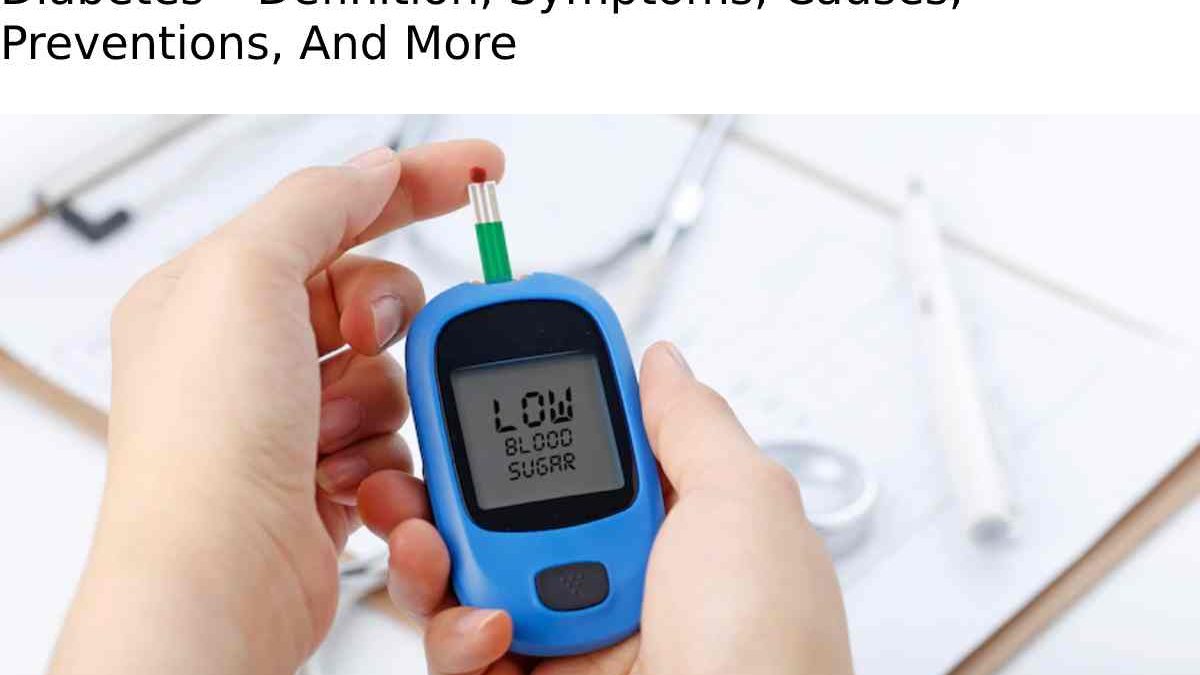Diabetes is define as when your body doesn’t make the hormone insulin. Lessen insulin in your body or not properly use insulin. It causes an excessive buildup of glucose (sugar) in the blood. There are two main types of diabetes.

Table of Contents
Types Of Diabetes
Diabetes mellitus, commonly known as sugar disease, is a metabolic disease that leads to high blood sugar levels. The hormone insulin carriages sugar from the blood into the body cells, stored or used for energy. With diabetes, your body doesn’t produce enough insulin or cannot use the insulin it produces effectively.
High blood sugar from untreated diabetes can damage your nerves, eyes, kidneys, and other organs.
There Are Different Types Of Diabetes
Type 1 diabetes is an autoimmune disease. The immune system attacks and ends the cells in the pancreas, where insulin is produced. It is unknown what reasons for this attack. Ten percent of the people suffer with this type of diabetes.
Type 2 diabetes is when your body becomes resilient to insulin, and sugar builds up.
Prediabetes occurs when blood sugar levels are upper than normal but not high enough to diagnose type 2 diabetes.
Gestational diabetes is high blood sugar throughout pregnancy. Insulin-blocking hormones shaped by the placenta cause this diabetes.
A condition called diabetes insipidus is not connected to diabetes mellitus, although it shares a similar name. Instead, it’s another condition where your kidneys remove too much fluid.
Diabetes Symptoms
Urinating (peeing) a lot, often at night
you are very thirsty
Lose weight without trying
they are very hungry
have blurred vision
Do you have numb or tingling hands or feet
feel very tired
I have very dry skin
They have wounds that are slow to heal.
You have more infections than usual
Extreme hunger.
extreme thirst
Frequent urination.
Unexplained weight loss.
Tiredness or drowsiness.
Blurred vision.
Slow healing of wounds, sores, or bruises.
Dry and itchy skin.
Frequent or recurring infections of the skin, gums, bladder, or vaginal candidiasis.
What Causes Diabetes?
Type 1
With type 1 diabetes, your body does not produce insulin. The immune system attacks and destroys the cells in the pancreas that produce insulin. Doctors don’t know why this happens. You are at advanced risk for type 1 diabetes if one of your parents or siblings has it.
Doctors Don’t Know Exactly What Reasons Type 1 Diabetes For some reason, the immune system mistakenly attacks and destroys the insulin-producing beta cells in the pancreas.
Genes can play a role in some people. For example, it is also possible for a virus to stimulate the immune system to attack.
Type 2
When you eat, your body converts most of the food you digest into glucose (a form of sugar). A hormone called insulin allows this glucose to get into every cell. There it is used energetically. The pancreas produces insulin. A person with type 2 diabetes, either the pancreas does not produce enough insulin or the body’s cells cannot use insulin properly (known as insulin resistance). This causes glucose to build up in the blood instead of entering the cells. Too much glucose in the blood can cause serious health problems that damage blood vessels, nerves, heart, eyes, and kidneys.
Type 2 diabetes results from a mixture of genetic and lifestyle factors. Being overweight or obese also increases the risk. Being overweight, especially in the abdominal area, makes cells more resistant to the effects of insulin on blood sugar.
This condition is hereditary. Family fellows share genes that make them more likely to have type 2 diabetes and be overweight.
Complications
Type 2 diabetes affects many important organs, including the heart, blood vessels, nerves, eyes and kidneys. In addition, factors that increase the risk of diabetes are risk factors for other serious chronic diseases. Managing diabetes and regulatory blood sugar can reduce the risk of these complications or comorbidities.
Potential Complications Of Diabetes And Common Comorbidities Include:
The disease of the heart and blood vessels. Diabetes is associated with an increased risk of heart disease, stroke, high blood pressure, and narrowing of blood vessels (atherosclerosis).
Nerve damage (neuropathy) in the extremities. High blood sugar can damage or abolish nerves over time and cause tingling, numbness, burning, pain, or a possible loss of feeling, which usually starts in the fingers or toes and gradually spreads upwards.
Other nerve damage. Damage to the heart nerves can contribute to irregular heart rhythms. Damage to the nerves in the digestive system can cause problems with nausea, vomiting, diarrhea, or constipation. In men, nerve damage can cause erectile dysfunction.
Nephropathy. it can lead to chronic kidney disease or irreversible end-stage kidney disease, which may require dialysis or a kidney transplant.
Eye damage it increases the risk of serious eye diseases such as cataracts and glaucoma and can damage blood vessels in the retina, potentially leading to blindness.
Skin diseases.it can make you more susceptible to skin problems, including bacterial and fungal infections.
Slow healing Left untreated, cuts and blisters can develop into serious infections that are difficult to heal. Severe damage may require amputation of a toe, foot, or leg.
Prevention
A healthy lifestyle can help prevent type 2 , even if your birth parents live with . In addition, if you have been diagnosed with prediabetes, lifestyle changes can slow or stop the progression.
A healthy lifestyle includes
Eat healthy food. Choose foods that are low in fat and calories and high in fiber. Focus on fruits, vegetables and whole grains.
To become active. Aim for 150 minutes or more per week of moderate-to-vigorous aerobic activity, such as brisk walking, biking, running, or swimming.
Lose weight. Losing and maintaining a small amount of weight can slow the progression from prediabetes to type 2. If you have prediabetes, losing 7-10% of your body weight can reduce your risk.
Avoid prolonged inactivity. Therefore, sitting for long times can increase your risk of type 2. Try to get up every 30 minutes and move around for at least a few minutes


